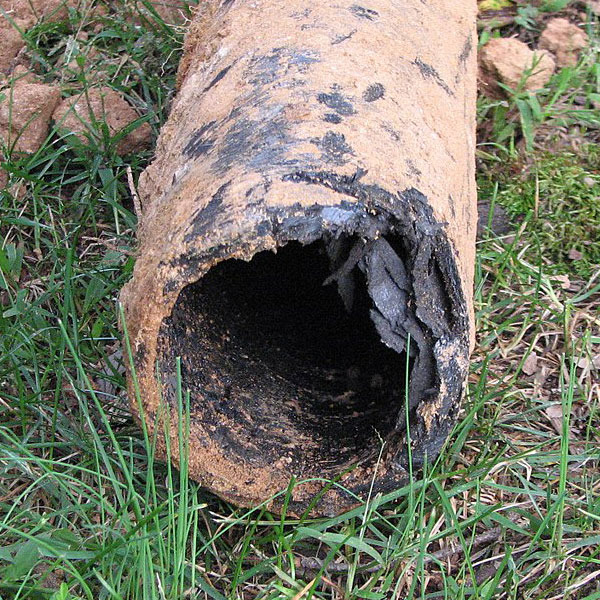Do you have continuing trouble with your drains? If so, please read on, as this could relate to you.
Could you have Pitch Fibre Pipework?
During the 1940s pitch fibre drainage pipes were developed and seen as the future of drainage. It is easy to understand why this was a cheaper and lighter alternative to the previous reliance on clay pipes; there was a war going on initially and for the remainder of the decade the focus was on rebuilding after the war. Pitch Fibre was simple to manufacture, lightweight and easy to install. Pitch Fibre was the way forward and these pipes were laid up until the 1970s.
Pitch fibre drains are made of wood cellulose/fibre impregnated with coal tar. While these pipes were initially considered to be incredibly advanced, it turns out that there some very specific problems that pitch fibre pipes can suffer from.
The drawbacks of Pitch Fibre Pipes;
For one thing, we have learned that these pipes have a general working life of around 40 years. This means that even the last pipes laid in the 1970s are exceeding their projected lifetime. A large number of properties on the Island have this pipe work installed, especially properties built between the 60’s and the 80’s. Furthermore, as lifestyles have changed throughout the past 70 plus years these drains have been subjected to greater volumes of hot water, fat, oils and grease than was perhaps expected back in the 1940s. Fat, oils and grease are a bad idea for any drain, for pitch fibre they can be incredibly problematic. These along with repeat quantities of hot water can soften the tar and cause delaminations in the form of bubbles in the fibre. Weakening the material means that the pipes can deform underground and eventually, if left untreated, collapse.
What can you do?
First things first, if you suspect you have pitch fibre pipes or if you are having drainage problems, we will conduct a CCTV survey on the pipework. The pitch fibre is identifiable due to its coal black colour and when it’s plagued with delaminations, it can break apart and even bow. Even the bubbles are clear identifiers of pitch fibre as these cannot occur in clay or plastic UPVC pipes.
Once identified, there are two tried and tested courses of action depending on a variety of factors. As with any damaged or broken pipework, there is an option to excavate the pipe and replace it with new. This is the only option with collapsed pipes, though it might not be the best option for a pipe with less damage. Excavations are certainly not a bad choice, we can dig up the pipework, replace it and recover the area. Although of course this comes with the drawbacks of time and mess while the excavation takes place. No matter the location of the pipe whether it be a quiet home or a busy place of work, that level of disruption to your day might not be something you want to undertake if you don’t necessarily have to.
Another solution to your drainage woes is a no-dig repair. The work is all completed on site, usually within a day, whereby we impregnate a polyester liner with resin, which is then inserted into the drain, moved into position and allowed to set. There are a variety of liners that we could use depending on the specific nature of the problem. It is even possible to reform the original pitch fibre back into its original position if it’s started to bow, which we would then line to strengthen the pipe and ensure that the structure will remain intact thereafter.
Give us a call on 422601 for more information


